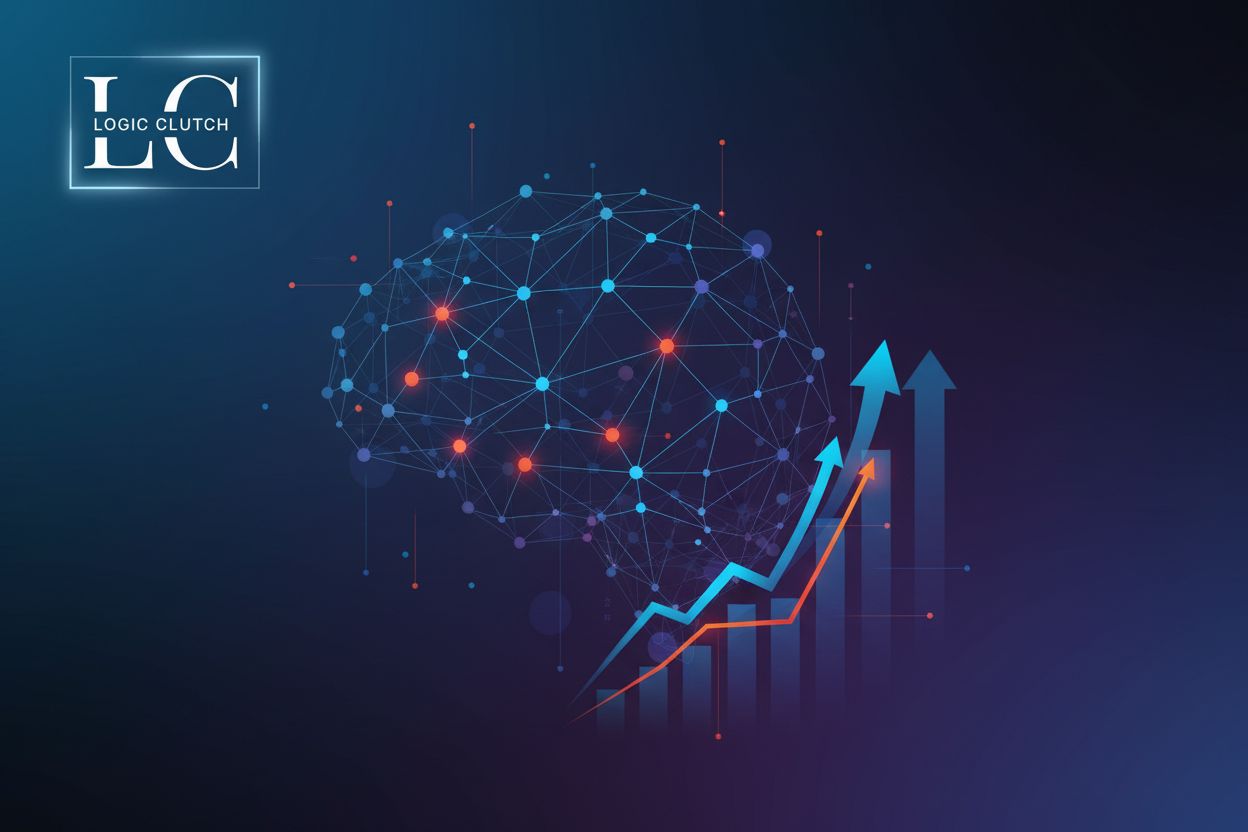Overview of Advanced Analytics Solutions
TL;DR
Introduction to Advanced Analytics
Advanced analytics, huh? It's not just about looking at what happened, but figuring out why and what's gonna happen next. (The Next Evolution of Analytics is Proactive - Christopher S. Penn) Think of it as business intelligence on steroids. (Generative AI Is Putting Business Intelligence On Steroids) Traditional business intelligence (BI) focuses on reporting and understanding past events, often through dashboards and static reports. Advanced analytics, on the other hand, goes deeper, using sophisticated techniques to uncover hidden patterns, predict future outcomes, and even recommend actions.
- Strategic decisions are driven by analytics, not just reports. It's about making smarter calls.
- ai and machine learning take analytics past traditional business intelligence. we're talking serious insights here.
- Digital transformation needs analytics to measure success and adapt. Otherwise, you're flying blind, right?
Think of healthcare orgs using predictive models to anticipate patient surges or retail giants optimizing inventory based on demand forecasts. that's the power of advanced analytics in action!
Understanding the Four Types of Advanced Analytics
Ever wonder how companies actually know what's gonna happen next? It's not magic, though sometimes it feels like it, right? It's advanced analytics, and it's kinda a big deal. There are four main types, each building on the last to give you a more complete picture.
First up is Descriptive Analytics. This is the most basic form, answering "What happened?" It involves summarizing historical data to understand past performance. Think of your standard sales reports or website traffic summaries. It's about looking in the rearview mirror.
Next, we have Diagnostic Analytics, which asks "Why did it happen?" This type digs deeper to find the root causes of events. It involves techniques like data discovery, drill-downs, and correlation analysis to identify relationships and anomalies. For example, if sales dropped last quarter, diagnostic analytics would help you figure out if it was due to a marketing campaign failure, a competitor's new product, or a change in customer behavior.
Then comes Predictive Analytics, which is all about using historical data, stats, and machine learning to, well, predict the future. It ain't about crystal balls; it's about spotting patterns and trends that help you forecast what might happen. analytics8 explains that predictive analytics enables organizations to anticipate outcomes through machine learning.
Here's the gist of predictive analytics:
- Forecasting future outcomes: This is the big one. Think predicting customer churn, so you can swoop in with a sweet deal before they jump ship.
- Identifying risks: Spotting potential fraud or assessing credit risk before it becomes a problem.
- Improving operations: Like, predicting when a machine might break down so you can schedule maintenance, and prevent downtime.
So, how does all this wizardry actually work? Basically, you feed a bunch of data into a model – could be anything from sales figures to website clicks – and the model learns to spot the patterns that lead to certain outcomes.
It's not always perfect, and you need to make sure your data is clean and relevant, but when it works, it's pretty darn powerful.
Let's say you run a hospital. Predictive models can analyze patient data to anticipate surges in patient volume, especially during flu season. This allows for better resource allocation, staffing, and ultimately, improved patient care.
Or, picture a retailer using predictive analytics to optimize inventory levels. By forecasting demand for specific products, they can minimize waste, reduce storage costs, and keep customers happy by always having what they need in stock.
Finally, we have Prescriptive Analytics. This is the most advanced type, answering "What should we do about it?" It goes beyond predicting outcomes to recommending specific actions to achieve desired results. It often uses optimization and simulation techniques. For example, if predictive analytics shows a high risk of customer churn, prescriptive analytics might suggest offering a specific discount or a personalized service to that customer.
Okay, let's be real – there are some potential downsides. What about data privacy? Algorithmic bias? We need to be careful about how we use these models, and make sure we're not reinforcing existing inequalities or invading people's privacy.
Predictive analytics isn't some magic bullet, but it's a seriously powerful tool for understanding the future. Now that we've covered the types of advanced analytics, let's see how they fit into a popular platform.
Advanced Analytics Solutions within Salesforce CRM
Advanced analytics in Salesforce? It's not just about pretty dashboards, it's about using the power of your crm data to really understand your customers. And maybe even get a jump on what they're gonna do next.
Salesforce offers some great tools for advanced analytics, but it's not always a one-size-fits-all kinda thing. You've got options, see?
Einstein Analytics (now Tableau CRM): This is Salesforce's own analytics platform. It lets you dig deep into your Salesforce data, create snazzy visualizations, and even use ai to predict outcomes. Think sales forecasting, figuring out which leads are most likely to convert, or even understanding which customers might be at risk of leaving. It's really about making your data actionable, not just something pretty to look at.
Integrating external data: Salesforce is great, but it doesn't hold all your data, does it? You can pull in data from other systems – like your marketing automation platform, your finance software, or even social media feeds- using apis and connectors. This gives you a much more, like, holistic view of your business.
Sometimes, off-the-shelf solutions just don't cut it. That's where custom analytics comes in.
Apex and Visualforce: If you're a developer, you can build your own custom dashboards and reports right within Salesforce using Apex and Visualforce. It gives you total control over how your data is analyzed and presented.
AppExchange: Don't wanna build it yourself? Check out the Salesforce AppExchange. It's got a ton of pre-built analytics solutions that you can just plug and play. there's apps for everything from marketing analytics to financial forecasting.
Imagine a healthcare provider using custom analytics to predict patient readmission rates. They could pull in data from Salesforce (patient demographics, appointment history) and external sources (like local hospital data, socioeconomic indicators). that way, they can identify at-risk patients and proactively offer support, which leads to better outcomes and lower costs.
Okay, so that's a glimpse into advanced analytics within Salesforce. Understanding these capabilities is the first step to leveraging them effectively.
AI-Powered Analytics: A Game Changer
ai-powered analytics? Yeah, it's kinda the thing everyone's talking about. But does it really live up to the hype? Let's see, shall we?
Machine learning (ml) algorithms are where it's at. They automate the whole data analysis gig, spotting patterns we'd probably miss staring at spreadsheets all day. Think of it like this:
- Automated pattern recognition means less manual sifting through data.
- Predictive modeling gets way more accurate than just guessing.
- Reduced manual effort frees up your team to actually use the insights.
Like, imagine a bank using machine learning to flag fraudulent transactions in real-time, or a marketing team using it to predict which customers are most likely to respond to a new campaign. Pretty slick, right?
Natural language processing (nlp) is another game-changer – especially for unstructured data. i mean, who has time to read every customer review?
- Analyze text data from surveys, social media, and support tickets.
- Extract sentiment to see how people feel about your brand.
- Identify key themes to understand what customers are really complaining about, or praising.
Imagine a hotel chain using nlp to analyze guest reviews and automatically identify areas for improvement, like "slow check-in" or "uncomfortable beds." That's some actionable stuff.
ai can generate actionable insights and recommendations – basically telling you what to do with all this data.
- Suggest the next best action for sales reps based on customer history.
- Identify potential upsell opportunities you probably haven't even thought of.
- Personalize customer experiences like never before.
For example, an e-commerce site could use ai to recommend products based on a customer's browsing history, or a financial advisor could use it to suggest investment strategies based on a client's risk tolerance.
These AI-driven insights are transforming how businesses operate, moving from reactive to proactive strategies.
Choosing the Right Advanced Analytics Solutions
Okay, so you're ready to pick the right advanced analytics solution, huh? It's not as simple as just grabbing the shiniest new toy. It's all about what your business actually needs, and what's gonna give you the best bang for your buck.
First things first: what problems are you actually trying to solve?
- Identify those kpis and business objectives. What metrics are you trying to move? Is it increasing sales conversion rates? Trying to reduce customer churn? or maybe improve operational efficiencies? Nail this down first!
- Then, take a good hard look at your current data setup. Do you even have the data you need? Is it clean? Can you actually get to it easily? No point in buying a fancy analytics platform if your data's a hot mess.
- And, honestly, how analytics-savvy is your team? Are they data wizards, or are they still struggling with spreadsheets? You don't want to get a tool that's too complex for them to use, right?
For example, if you're a small retail business aiming to boost online sales, you might focus on solutions that analyze website traffic and customer behavior. A global healthcare org, on the other hand, might need something much more robust to handle massive datasets and complex predictive models.
When selecting a solution, consider the various platforms available. Some are integrated into existing CRM systems like Salesforce (e.g., Tableau CRM), while others are standalone business intelligence tools or specialized AI platforms. Each has its strengths and weaknesses depending on your specific needs and technical capabilities.
Conclusion
So, where does all this leave us? Advanced analytics isn't just a buzzword, it's kinda crucial for staying competitive.
- It's about data-driven decisions and, you know, actually understanding what's going on with your business.
- ai and ml are changing the game, making it easier to spot trends and predict outcomes.
- Picking the right solution is non-negotiable.
Don't just sit there—go unlock your data's potential.






